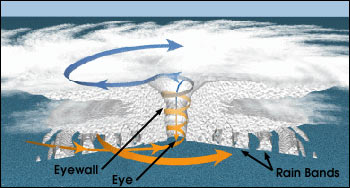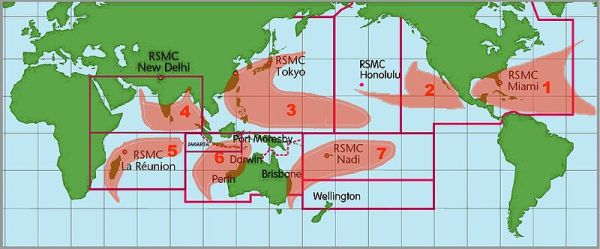|
What is a hurricane?
A hurricane is a large rotating storm with high speed winds that forms over warm waters in tropical areas. Hurricanes have sustained winds of at least 74 miles per hour and an area of low air pressure in the center called the eye. Different Names for Hurricanes The scientific name for a hurricane is a tropical cyclone. Tropical cyclones go by different names in different places. In North America and the Caribbean they are called "hurricanes", in the Indian Ocean they are called "cyclones", and in Southeast Asia they are called "typhoons." |
 |

